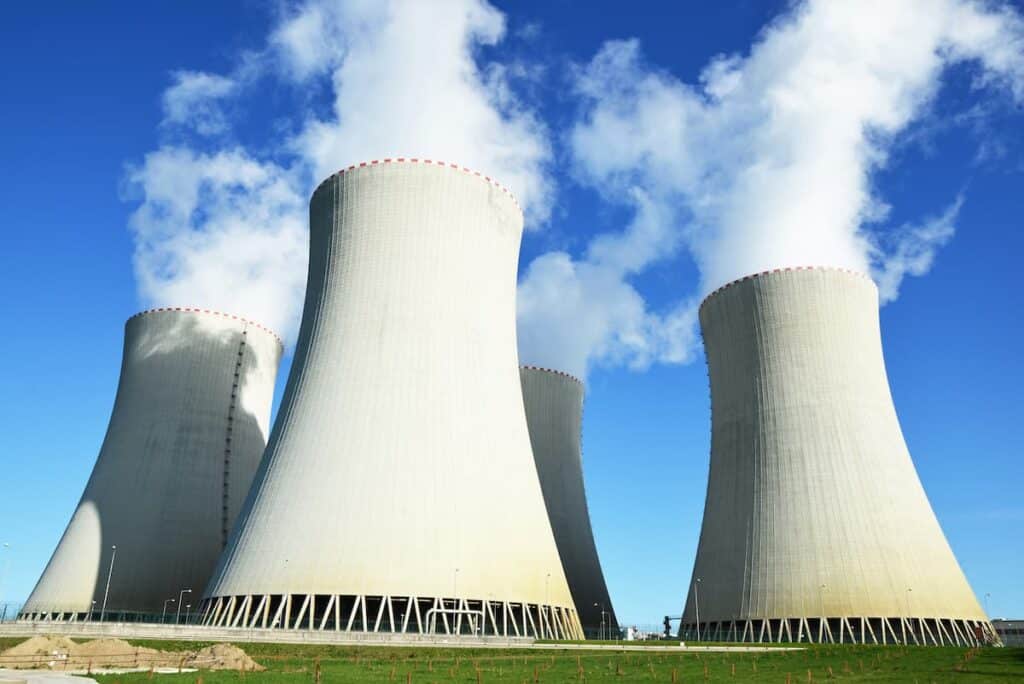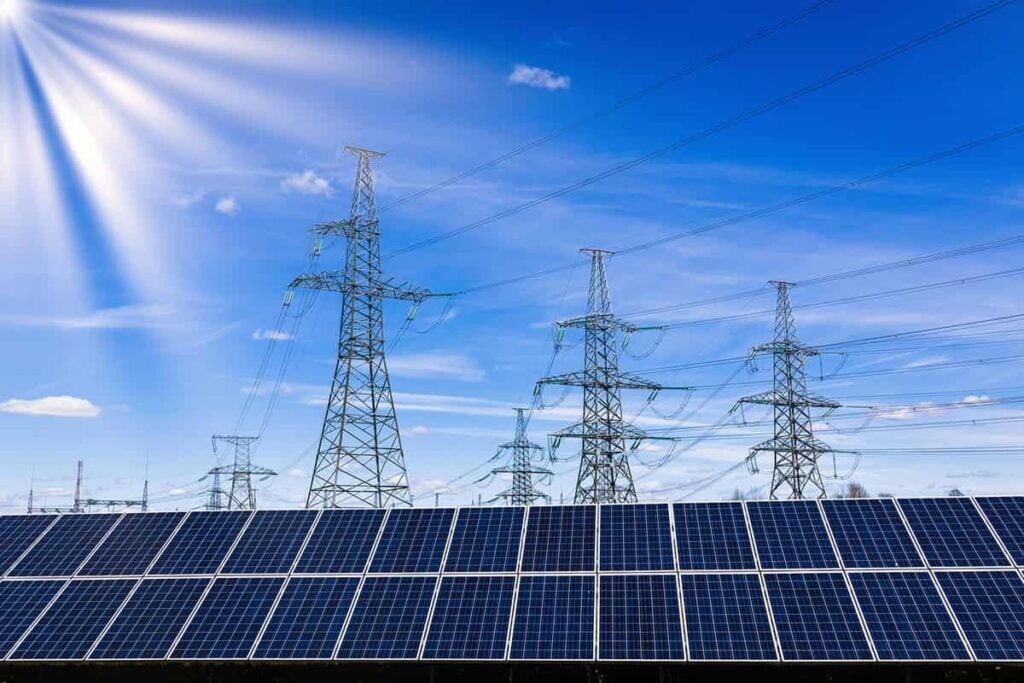6 Nuclear Energy Companies Building Molten Salt Reactors
Table of contents
Table of contents
- Terrestrial Energy (Ontario Canada)
- Moltex Energy (London, England)
- ThorCon Power (Florida USA)
- TerraPower(Washington USA)
- Flibe Energy (Alabama USA)
- Transatomic Power Corporation (Massachusetts USA)
- Conclusion

According to the World Nuclear Association, electricity demand almost doubled from 1990 to 2011, and is projected to grow 81% from 2011 to 2035. Nuclear power currently provides for about 11% of the world’s electricity, and 21% of electricity in OECD countries. While nuclear power is the most environmentally benign way of producing electricity on a large scale, accidents like Fukushima and Chernobyl have given the nuclear energy industry a bad reputation in the eyes of the general public.
In order to increase the use of nuclear power, we need to rethink the technology being used with a focus on safety. One such approach is the Molten Salt Reactor (MSR) which is expected to be cheaper, safer, and generate less nuclear waste when compared to traditional nuclear reactors. The below schematic shows how the concept works:

The technology must hold some promise, as there are now 6 companies pursuing some form of an MSR.
Terrestrial Energy (Ontario Canada)
Founded in 2013, Terrestrial is developing their “Integral Molten Salt Reactor” (IMSR) into a small modular design, with its three first-of-a-kind models ranging from 29 MWe to 290 MWe which will be suited for remote communities and industrial operations. Their International Advisory Board includes influential individuals such as the former CTO of Lockheed, a former NRC Commissioner, a former EPA Administrator, and the former President of Bechtel Nuclear. Terrestrial expects to build and license its first MSR by early next decade, and has signed a Letter of Intent to conduct R&D activities with Canadian Nuclear Laboratories.
Moltex Energy (London, England)
Founded in 2012, Moltex has developed a genuinely new reactor concept which parts ways from the conventional MSR design. Named the “Stable Salt Reactor”, this reactor uses molten salt fuel held in static fuel tubes, rather than conventional ‘pumped circulation’ designs. Protected by worldwide patents, this British invention is expected to reduce engineering complexity and regulatory burden. The Company’s next step is to carry out a preliminary safety assessment with nuclear regulators after which they can then begin to look at economic feasibility.
ThorCon Power (Florida USA)
Thorcon has spent the past 4 years designing a simple molten salt reactor which requires no new technology. The Company claims their pilot was already proven through the Molten Salt Reactor Experiment (MSRE) which began in 1959 and ended in 1969. They need to simply scale that original design, and believe that there is no technical reason why a full-scale 250 MWe prototype cannot be operating within four years. Their packaged nuclear power plant units based on this design will be buried 30 yards underground and will be “walkaway safe”. Production is expected to start by 2020.
TerraPower(Washington USA)
Founded in 2008, TerraPower counts Bill Gates as both an investor and their Chairman. The Company’s technology is referred to as the “traveling wave reactor” (TWR) and uses depleted uranium which greatly simplifies the nuclear fuel cycle. Just last month they signed a “memorandum of understanding” with the China National Nuclear Corporation (CNNC) which they called “the next step towards developing a prototype”.
Flibe Energy (Alabama USA)
Founded in 2011, Flibe proposed to use thorium as a nuclear fuel instead of uranium. The founder Kirk Sorensen, both a nuclear engineer and rocket scientist, claims that corporate interests have prevented thorium from being used as a nuclear fuel. Flibe’s liquid fluoride thorium reactor is expected to cost several hundred million dollars to build.
Transatomic Power Corporation (Massachusetts USA)
Founded in 2010, Transatomic is the only company which has disclosed their funding amounts, 3 rounds totaling $5.5 million from investors that included Peter Thiel. The Company is developing their “Waste-Annihilating Molten Salt Reactor” (WAMSR) which is a 520 MW molten salt reactor which uses the waste from traditional reactors as a fuel source. While a traditional reactor may use up to 4% of the energy in their uranium fuel, the WAMSR utilizes 96% consequently reducing nuclear waste to 2.5% of what is produced by a typical reactor. Overnight cost of the WAMSR is $1.7 billion, and they are currently running lab-scale experiments to refine the design for the prototype facility which is expected to be completed by 2020.
Conclusion
One commonality across all six of these companies is that they are all in the very early stages of development, and consequently don’t need much funding yet. This also means that we’re a long way from retail investors being able to participate in MSR technology as an investment. A big investment round for any of these companies would signal a departure from the concept stage onto the building stage.
Sign up to our newsletter to get more of our great research delivered straight to your inbox!
Nanalyze Weekly includes useful insights written by our team of underpaid MBAs, research on new disruptive technology stocks flying under the radar, and summaries of our recent research. Always 100% free.















This country needs a set of these MSRs. A vital decision needs to be taken on technical, not political, options and a production line set up in this country.My choice is about four “Terrestrial” 290 MWe and help to develop and produce many Moltex reactors.
Thank you for dropping us a line Harry. Why that hasn’t happened yet is probably a function of the NIMBY syndrome more than anything!
As a student at UC Berkeley during the campus unrest, protests, and riots 50 years ago, I joined a student organization that was investigating who starts these protests. One discovery we made was that all of the anti-nuclear protests were initiated by oil companies and their highly paid instigators and speakers were trained professionals who dressed and acted like they were graduate or law school students.
Thanks for the comment John. That’s interesting. What was the connection between nuclear energy and oil? Wouldn’t it be the coal companies protesting?
Oil companies don’t just produce oil. They also produce natural gas. Any intermittent energy source requires a backup (for when the sun doesn’t shine and the wind doesn’t blow). Energy storage is expensive and there doesn’t seem to be any cheap solution in the foreseeable future. So an alternative source needs to be available in order to have a reliable grid. That’s where natural gas vs nuclear comes in. The best way to think of renewable energy is this: You have a natural gas powered generating plant and part of the time renewable energy sources can save the cost of supplying fuel to this plant. But the real cost of electricity must combine both of these costs. People will say that renewable energy is less expensive, and it is if you don’t care about reliability. A reliable grid based on nuclear is less expensive using this metric.
Solid comment, thank you for that James!
Just unbelievable that this technology is being around for such a long time and we have not taken advantage of it ! Imagine just what will it mean for mankind ! I am speechless period
In my discussions some years ago with Flibe Energy Inc., an ambitious program was proposed to build a Thorium LFTR within circa 5 years. Now, after 5 years, the Thorium LFTR reactor has still not been built and it would appear that insufficient funds have been provided by investors, especially after the Fukushima Dai’ichi triple meltdowns and fuel pool fire (that will take centuries to resolve, if ever). The present nuclear industry is so entrenched with U235/U238 to Pu239 (enriched fuel, MOX and such like), with huge conventional stockpiles of nuclear material (e.g. United Kingdom has circa 190 tonnes of Plutonium in storage from reprocessing at Sellafield, and 60000 tonnes of Uranium Hexafluoride at Capenhurst) that it would be inconceivable simply for the present nuclear industry to abandon all this established technology and move over to Thorium LFTR (Th232 to U233). Thus, whilst the cost of renewable energy is reducing steadily (e.g. solar), and promising developments are now occurring in the field of “cold fusion” via nanotechnology research, the conventional nuclear industry will simply be overtaken commercially by developments in other fields of energy technology. This will leave Thorium LFTR as a “backwater” technology, unless it can be configured to transmute existing nuclear waste to something safer. At present, it is estimated that there are 145000 tonnes of highly reactive nuclear waste Worldwide that needs to be stored safely for 100000 years (using some approach yet to be devised). There is sadly little hope for mankind, and Thorium LFTR will most likely fade away as an ill-conceived dream. Beware of persuasive smooth-talking Thorium LFTR enthusiasts/zealots; they do not appreciate the practical realities of what they are trying to promote.
I don’t think the global warming/ocean Acidification/mass extinction denier group have fully appreciated that the scienticts have been low balling the effects. I’m already hearing claims of 4c by 2030.
The astonishing negativity to nuclear generation has made it the new “N” word. Of the 15000+ people that died in Japan in 2011, zero died of radiation. When that perspective flips and nuclear is again the wonder energy source then things will accelerate quickly
I also don’t think we don’t appreciate the self generating electric car robot manufacturing acceleration curve that we will begin to experience within a few years. Think of world War II production on steroids. Hundreds of millions of electric cars in years not decades. There will be more than enough need for multiple forms of energy generation if only we can just wean ourselves off of ancient combustion engines. And seeing as books are starting to disappear, I don’t see it taking to long
The other question is, just how long will it take for emerging markets to move off of combustion engines? That could take a very long time.
You provide no technical basis for dismissing the Thorium-U-233 Molten Salt Reactor fuel cycle.
This is a very promising technology that should have never been defunded by Richard Nixon back in 1971.
Richard Nixon only wanted funding for the U-235-Pu-239 breeder reactor fuel cycle because the money would be spent in California instead of Tennessee.
My Understanding from reading about Transatomic Power is that they plan to use existion waste to run their reactor thus helping to consume the available stockpiles of waste, “Waste-Annihilating Molten Salt Reactor” (WAMSR). I also understand that other Thouium burners could also consume some of this waste. Would you consider some other types of Thorium reactor systems capible of being helpful in reducing waste, if the LFTR is not best suited to solving waste issue?
In regard of the Combustion Engines’ end, i heard the rumors of EU planning Geno(Engino-)zide for those by the year 2030! Although i doubt that it will come within the next 13-14 years time, i hold on to that hope!
@Dr.Norris: what exactly leads you to the explanation, that Thorium LFTR’s do not hold up to what’s being told about them? There are a couple of extremly knowledgeable people out there, who disected the technology, studyied the ORIGNINAL Specs from the 1960’s and verified with people who actually worked on such projects. You call them Liars?
I’d say it’s the ONLY way to do Nuclear Energy for now. Anything else is like Russian Roulette.
Just wanted to jump in here and say that anyone who has some technology along these lines that can’t seem to get funding should check out Peter Thiel’s Breakout Labs. We just wrote about it:
https://nanalyze.com/2016/11/peter-thiel-breakout-labs/
He gives out (very selectively) $350,000 grants for moon shot technologies.
You missed:
ELYSIUM INDUSTRIES – MCFR US/Canada
FLIBE ENERGY LFTR US
ALPHATECH RESEARCH US
MUONS, INC (GEM*STAR) ADSR US
COPENHAGEN ATOMICS DENMARK
CNRS MSFR France, et. al.
There is another in Denmark that split from Copenhagen. Atomics
That is at least 8 in the US.
Thank you for that Ed! We’ll look to do an update on this article.
A proof of concept MSR was built in the 1950s, I believe. It was politicians of the time that decided to go with the light water reactor technology – probably to secure more employment votes in California at the time.
Fusion may be developed in the future, but thorium molten can provide reliable energy today.
Thorium molten salt seems to be the big step forward in the development of neuclar energy. It may be time to own the mistakes of the past and get on with promoting what makes it so much better to avoid those previous negative outcomes. Fukashima may not have killed anybody but the other fallout needs to be acknowledged and addressed with this new technology.
Cheers for the comment Paul. Here’s a more recent piece on this topic: https://nanalyze.com/2017/02/molten-salt-reactor-when/
An update on nuclear power generation, peer reviewed and encompassing all generation 3, 3+, 4 designs is long overdue. Populist pundits need to be debunked. Too many people have bought into nuclear equals bad without any research. “ My mind is made up, don’t confuse me with the facts”
We simply cannot afford to keep giving so much credibility to zealots such as Dr. Helen Caldicott, she was correct in her opposition to nuclear weapons, then went right off the rails on all things nuclear. It’ Time for a reality check.
We’re getting ready to do an update on this space and see what progress has been made. Everyone always seems to be “five years away from commercialization” every time we check on them.
We desperately need to scale up these safe mini-reactors as in WWII or faster in order to meet the clean electricity
needs of the next 3 decades. Today, there are 9.6 million square miles of permafrost melting all across the northern
hemisphere leaking tons of methane! Pray that the government and the billionaires start funding on a massive scale
as soon as possible for safe nuclear reactors! If they do, we have a shot at surviving.
Technology will need to solve these problems. Nothing subsidized will scale. Technologies like synthetic biology and AI are the way forward here. Today’s young activists need to put down their placards and go study STEM. Preaching only annoys those of us who people who are actually busting their asses trying to make a difference. There are many ways forward, and they all involve technological breakthroughs. Let’s get busy.
There will always be a continuum from uninformed protesters to impractical visionaries. Let us, as Scientists Without Borders, arrive at consensus regarding the need for and the resolve to develop practical technologies together, sharing our discoveries, so that the aforementioned can at least live long and prosper with the rest of us, and continue to pursue their passions.
“Scientists Without Borders” sounds kind of cool.
Hi everyone! very interesting article. My question is if you have any updates on companies that could be ahead on the development of this technology? I’ve read about Rolls-Royce as well. Thank you very much in advance!
Glad you enjoyed it! Please see our most recent piece on the topic: https://nanalyze.com/2021/03/molten-salt-reactors-nuclear-technology/
Thorium Nuclear Power has many merits. Disadvantages are cost and lack of know-how. It is true that some scientists fools government and investors to get fundings, I had seen it. If we don’t succeed, China or India may make this technology to work. Just like the hi-speed rail. China built a great network. I’m afraid to see we loose this race.
Very true. China has moved on from copying technology to leading technology, at least in a number of areas. We covered that a while ago here: https://www.nanalyze.com/2018/01/china-kicking-americas-ass-tech/